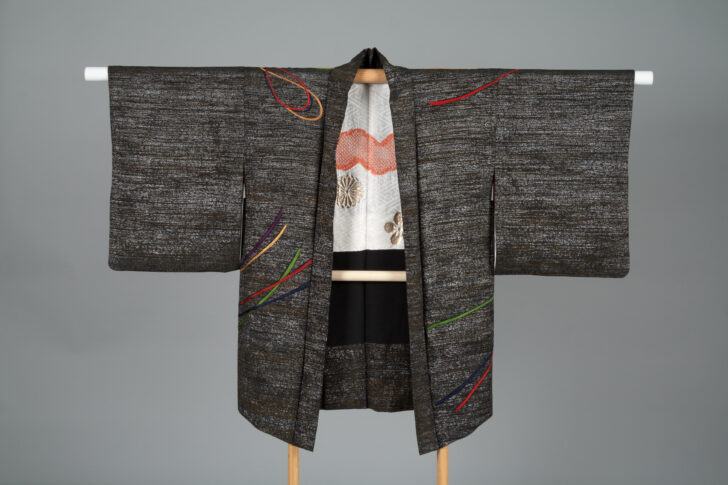Haori
Japanese

Description
On the back of this haori is an embroidered kusudama, a medicine or flower ball originally used for incense and potpourri. In contemporary times kusudama are often made from origami paper, folded into multiple pyramids and connected together to form stylized flowers. A decorative tassel can be attached to the bottom of the ball; here one wraps around to the front of the haori. In the Edo period (1615–1868) the haori was a type of formal attire for men, but in the nineteenth century it was adopted by female entertainers in the capital, Edo (present-day Tokyo), as a cloak for outdoor wear in mild weather. Later the haori became the standard outerwear for women who dress in kimono outside the home.
Spring/Summer Gallery Rotation 2015
Subject Matter:
On the back of this haori is an embroidered kusudama, a medicine or flower ball originally used for incense and potpourri. In contemporary times kusudama are often made from origami paper, folded into multiple pyramids and connected together to form stylized flowers. A decorative tassel can be attached to the bottom of the ball; here one wraps around to the front of the haori.
Physical Description:
White silk with zigzag pattern lining, black with silver threading throughout, braided thread in gold, purple, red and green, all over the fabric in a random continuous pattern.
Usage Rights:
If you are interested in using an image for a publication, please visit https://umma.umich.edu/request-image/ for more information and to fill out the online Image Rights and Reproductions Request Form.